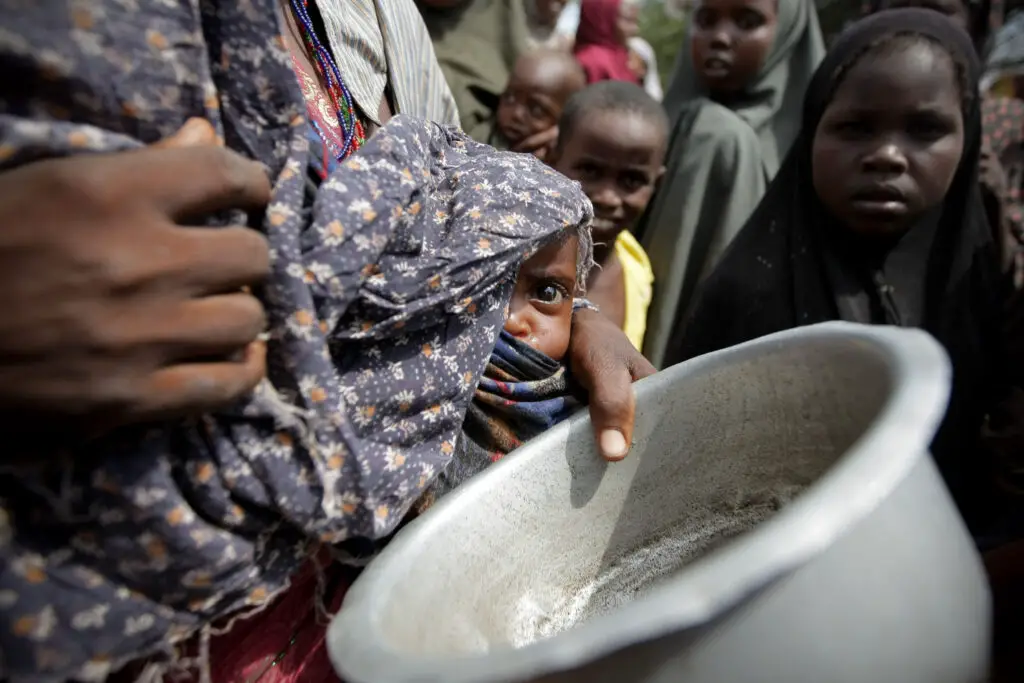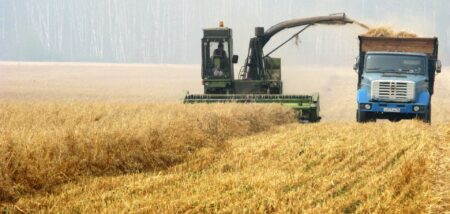- AfDB announces US$ 1.5 billion funding for emergency food responce
- AfDB pledges seeds & fertilizers for 20 million smallholder farmers
- Oxfam warns of famine in Somalia
In May 2022, the African Development Bank (AfDB) Board of Directors approved $1.5 billion in funding for what the bank called the African Emergency Food Production Facility; one year down the road, has the funding achieved its purpose?
AfDB President Akinwumi Adesina described the facility as a necessary support for Africa’s emergency food response in the face of shortages caused by the Russia-Ukraine war.
The bank’s President said the funding will help to significantly increase food production in Africa and avert what he at the time described as ‘the looming food crisis caused by the Russia-Ukraine war.’
Making the announcement at the Summit of G7 leaders last year in Washington, Mr. Adesina announced that the African Development Bank (AfDB) would out of its own resources, facilitate $1.3 billion of the targeted $1.5 billion budget for the emergency Africa food security facility.
The AfDB president explained that the funding would facilitate the provision of climate-smart, certified cereals to more than 20 million smallholder farmers across the continent. He said the funding would support access to seeds to grow like wheat, maize, soy, and other staples.
The funding would also bridge the fertilizer and other agro-input gaps created by the Russia-Ukraine war;
“This will allow Africa to rapidly produce over the next four farming seasons an additional 38 million tons of food worth $12 billion,” the AfDB president announced.
He called on international bodies to contribute and they responded in kind. The United States was one of the fund’s major contributors with the Biden administration announcing plans to invest $760 million to ‘combat the effects of high food, fuel, and war-driven fertilizer prices in those countries that need this support most’.
Also Read: South Sudan receives $8.1 million grant from AfDB to boost food production
Speaking at the summit, U.S. President Joseph Biden announced that overall, the US and the other G7 countries would issue a combined sum of US$4.5 billion to reinforce global food security. Half of this would come from the United States.
Biden went on to announce United States’ unwavering support to the African Development Bank’s Africa Disaster Risk Financing program. He said the facility is vital in helping Africa respond to severe food insecurity in the face of extreme weather such as drought or flooding.
“I am delighted about the significant announcement and contributions made by President Joe Biden and fellow G7 leaders, to tangibly support the work of the African Development Bank and to address global food security,” said the President of the African Development Bank, Dr. Akinwumi Adesina.
“The U.S. government’s multi-pronged response to global food security challenges, which entails support for some of the African Development Bank’s own innovative programs, is a tremendous boost to our efforts and other institutions who are working hard to support African countries at this particular time of need. We warmly and wholeheartedly embrace the support of the United States and other G7 member nations,” he added.
Also Read: Strengthen fertilizer value chains- African Development Bank
The AfDB $ 1.5 billion emergency food facility KPIs
- Delivering certified seeds, fertilizer and extension services to 20 million farmers, using innovation as well as internet and communications technology platforms.
- Supporting post-harvest management and market development
- Providing financing and credit guarantees for the large-scale supply of fertilizer to wholesalers and aggregators
- Supporting policy reform
- Facilitate modern inputs getting to farmers, including strengthening national institutions overseeing input markets
Overall, the AfDB said that through this emergency food facility it would increase production of 37.6 million tonnes of staple food crops (wheat, maize, rice, and soybean), an increase of about 30% in local production over two years, 2022-24. It will do so by:
• Scaling up wheat production with heat-tolerant varieties.
• Scaling up maize production with water-efficient maize.
• Scaling up rice and soybean production.
• Creating information and communications technology-based systems that deliver transparency and inclusion support to farmers, especially for women and youth.
Also Read: G7 institutions team up to invest $80bn into Africa’s private sector
Technologies for African Agricultural Transformation (TAAT)
Under the AfDB led African Emergency Food Production program that the bank’s president announced almost a year ago, a total of 38 million tons of food is to be produced including 11 million tons of wheat, 18 million tons of maize, six million tons of rice and 2.5 million tons of soybeans.
This funding facility builds on the Bank’s ongoing Technologies for African Agricultural Transformation (TAAT) program that was launched in 2019. Since its inception, TAAT has seen the production of draught resistant wheat seed varieties that have been issued to some 1.8 million farmers across seven countries.
Through TAAT, the AfDB has been able to increase wheat production by 2.7 million tonnes, spotting a monetary value of $840 million.
Through this facility, the African Development Bank pledged to increase access to affordable fertilizers specifically for smallholder farmers over the course of four farming seasons.
The bank promised to use its influence to move major fertilizer manufacturers to issue loan guarantees, and provide smart subsidies to farmers who are looking to adopt digital technologies.
“The Facility also aims to secure African government commitments toward policy reform that creates a more welcoming investment and business environment across the continent’s food value chain,” the AfDB promised Africa and the World.
Much remains to be seen of these promises, it is now almost one year since the US$1.5 billion was announced but the AfDB is yet to issue an official progress report. It remains unclear as to who the 20 million supposed smallholder beneficiaries of the facility are and how much of the seeds and fertilizers have actually reached them.
The AfDB is also yet to reveal which policy reforms it has effected since the facility was announced last year in May and if any post-harvest management and market development have been conducted as promised. The bank also promised to provide financing and credit guarantees for the large-scale supply of fertilizer and to facilitate smallholder farmers’ access to modern inputs.
Meanwhile, quoting a statement from the United Nations, Oxfam warns that; “famine is at the door in Somalia” and “By June 2023, the number of people in catastrophic levels of hunger is expected to double to 727,000.”
The latest Oxfam estimates also show that one person is likely to die of hunger every 36 seconds between now and the end of the year in the region as the worst hit areas hurtle towards famine.
“We are already witnessing a disaster unfold and cannot wait for famine to be declared a disaster to activate resources to save lives,” said Abby Maxman, Oxfam America’s President and CEO.
To their merit, the African Development Fund has approved a US$5.4 million grant to build food security in Somalia as of July last year. It is not clear whether the funding is part of the emergency food facility or the 2021 multinational program to Build Resilience for Food and Nutrition Security (BREFONS).
Under the BREFONS Program, US$20 million was approved in November 2021 to “contribute to improving living conditions of rural communities in the project’s target areas and that of their livestock by improving their access to water, pasture, and animal health and markets.”











